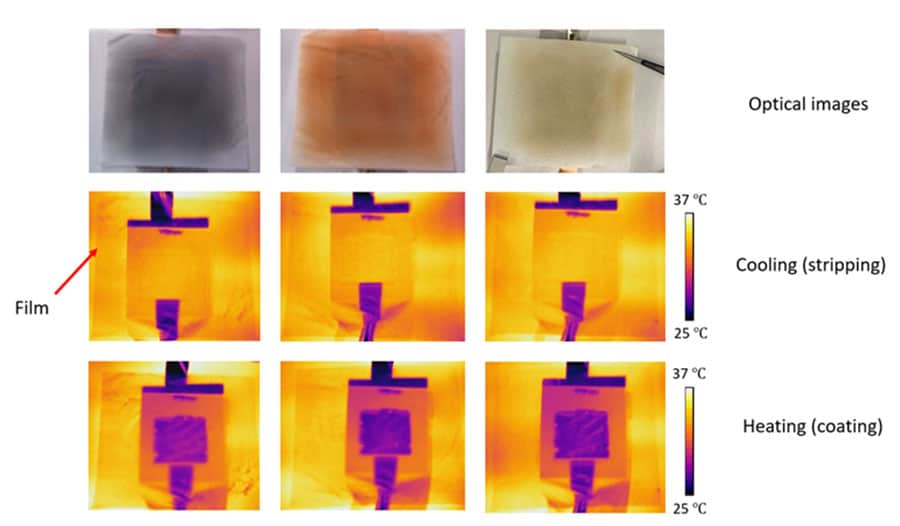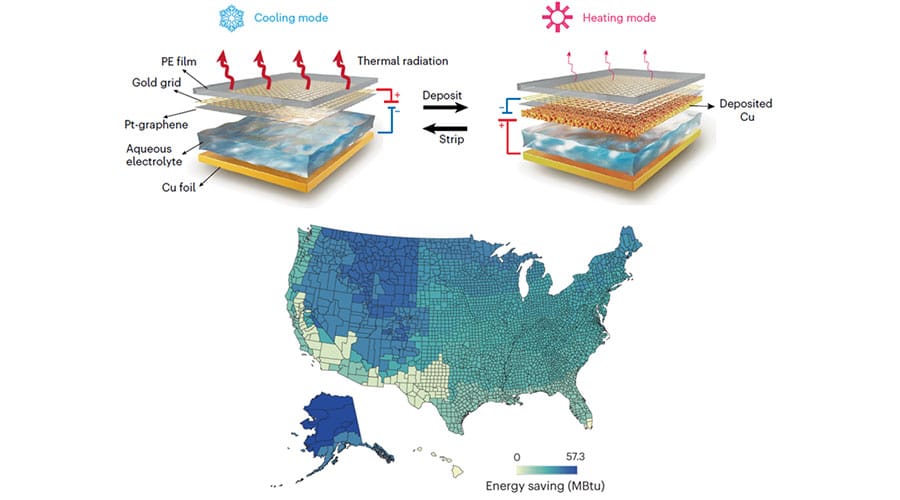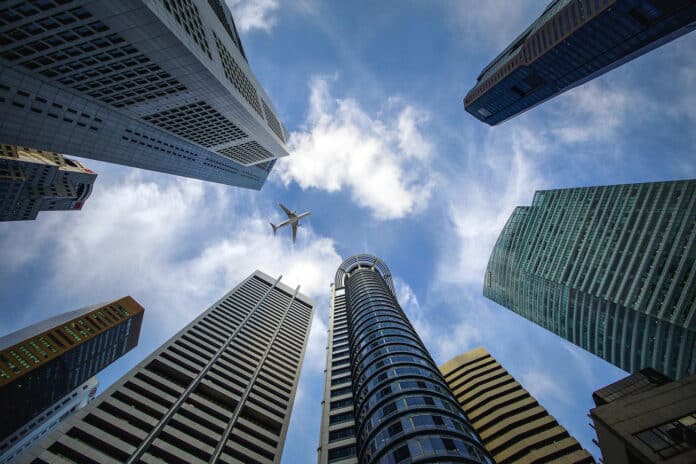According to some estimates, buildings consume almost 151 EJ of energy, equivalent to 36% of the world’s final energy consumption. The operation of buildings accounts for almost 30% of global energy consumption and emit 10% of all global greenhouse gas. About half of this energy footprint is attributed to the heating and cooling of interior spaces.
To address the challenge of saving energy in the face of increasingly frequent extreme weather events and variable weather, researchers at the University of Chicago’s Pritzker School of Molecular Engineering (PME) have designed a “chameleon-like” building material that changes its infrared color and how much heat it absorbs or emits based on the temperature outside.
On hot days, the material can emit up to 92% of the infrared heat it contains, helping cool the inside of a building. However, it emits just 7% of its infrared on cold winter days, keeping a building warm.
Previously developed radiative cooling materials help keep buildings cool by boosting their ability to emit infrared, the heat that radiates from people and objects. Also, there are materials that prevent the emission of infrared in cold climates. But researchers say there is a need for buildings to be able to adapt; few climates require year-round heating or year-round air conditioning.

To address this, Asst. Prof. Po-Chun Hsu, who led the research, and his team designed a non-flammable “electrochromic” building material that contains a layer that can take on two conformations: solid copper that retains most infrared heat, which helps keep the building warm; or a watery solution that emits infrared, which can help cool the building. The device uses a tiny amount of electricity to induce the chemical shift between the states by either depositing copper into a thin film or stripping that copper off.
Researchers say the device can switch rapidly and reversibly between the metal and liquid states and effectively switch between the two conformations even after 1,800 cycles.
The team then created models of how their material could cut energy costs in typical buildings in 15 different U.S. cities. In an average commercial building, researchers say, the electricity used to induce electrochromic changes in the material would be less than 0.2% of the total electricity usage of the building but could save 8.4% of the building’s annual HVAC energy consumption.
“Once you switch between states, you don’t need to apply any more energy to stay in either state,” said Hsu. “So for buildings where you don’t need to switch between these states very frequently, it’s really using a very negligible amount of electricity.”

So far, the researchers have only created pieces of the material that measure about six centimeters across. However, many such patches of the material could be assembled like shingles into larger sheets, and the material could also be tweaked to use different, custom colors without impacting its ability to absorb infrared.
They are now investigating different ways of fabricating the material and also plan to probe how intermediate states of the material could be useful.
“We’ve essentially figured out a low-energy way to treat a building like a person; you add a layer when you’re cold and take off a layer when you’re hot,” said Prof. Po-Chun Hsu. “This kind of smart material lets us maintain the temperature in a building without huge amounts of energy.”
Journal reference:
- Chenxi Sui, Jiankun Pu, Ting-Hsuan Chen, Jiawei Liang, Yi-Ting Lai, Yunfei Rao, Ronghui Wu, Yu Han, Keyu Wang, Xiuqiang Li, Venkatasubramanian Viswanathan, Po-Chun Hsu. Dynamic electrochromism for all-season radiative thermoregulation. Nature Sustainability, 2023; DOI: 10.1038/s41893-022-01023-2
